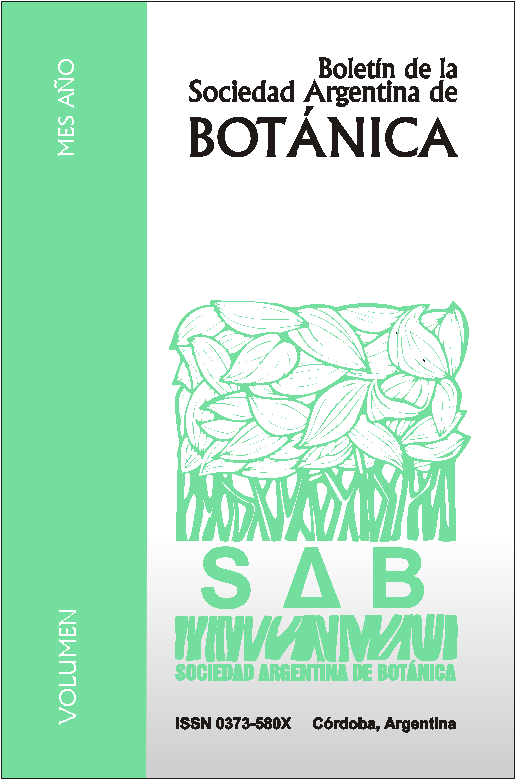Crecimiento y ramificación de Nothofagus alpina y Nothofagus obliqua (Nothofagaceae) bajo diferentes condiciones lumínicas Growth and branching in Nothofagus alpina and Nothofagus obliqua (Nothofagaceae) under different light conditions
DOI:
https://doi.org/10.31055/1851.2372.v48.n2.6262Resumen
Summary: Growth and branching in Nothofagus alpina and Nothofagus obliqua (Nothofagaceae) under different light conditions. Architectural traits of entire main branches and their growth units (GUs) were assessed for trees of Nothofagus alpina and N. obliqua developed at three sites with different levels of natural shading (low: roadside, intermediate: nursery, and high: understory). The hierarchical structure of main branches was evaluated by means of: (1) the ratio between the diameters of the secondary branches and that of the parent main branch, and (2) the angles formed between secondary branches and main branches. Understory trees had GUs with less leaves and a thinner and shorter stem compared to those of trees at the less shaded sites. These differences were less notable for more recently-extended GUs. Branching systems became less hierarchical as they aged, but were not significantly different in their hierarchical structure among sites. Main branches of understory N. alpina and N. obliqua trees may develop for years by producing small and scarcely branched GUs. Main branches of N. obliqua trees tend to develop less hierarchical branching systems and to be more negatively affected by shading than those of N. alpina.
Key words: Architecture, branching pattern, hierarchies, growth unit, morphogenetic gradient, Nothofagus alpina, Nothofagus obliqua, shade tolerance.
Resumen: Se compararon las características arquitecturales de ramas principales completas y de sus unidades de crecimiento (UC) en árboles de Nothofagus alpina y N. obliqua desarrollados en tres sitios con diferente nivel de sombreo natural (bajo: banquina, intermedio: vivero, y alto: sotobosque). Se evaluó la estructura jerárquica de las ramas principales mediante: (1) la relación entre el diámetro de las ramas secundarias y el de la rama principal portadora y (2) los ángulos formados entre ramas secundarias y ramas principales. Las ramas principales de los árboles del sotobosque presentaron UC más delgadas y cortas y con menos hojas y ramas que aquellas de los árboles menos sombreados. Estas diferencias disminuyeron para UC extendidas más recientemente. Con el incremento de la edad de los sistemas de ramificación, se observó una disminución en el desarrollo jerárquico de los mismos, pero no se evidenciaron variaciones notables en su jerarquía entre sitios. En ambas especies, las ramas principales de los árboles de sotobosque pueden desarrollarse por años produciendo UC cortas y poco ramificadas. Las ramas principales de N. obliqua tienden a ramificarse en forma menos jerárquica y a perder vigor en forma más notable al desarrollarse en la sombra que las de N. alpina.
Palabras clave: Arquitectura, gradiente morfogenético, jerarquías, patrón de ramificación, Nothofagus alpina, Nothofagus obliqua, tolerancia a la sombra, unidad de crecimiento.
Descargas
Número
Sección
Licencia
El Bol. Soc. Argent. Bot.:
- Provee ACCESO ABIERTO y gratuito inmediato a su contenido bajo el principio de que hacer disponible gratuitamente la investigación al público, lo cual fomenta un mayor intercambio de conocimiento global.

- Permite a los autores mantener sus derechos de autor sin restricciones.
- El material publicado en Bol. Soc. Argent. Bot. se distribuye bajo una licencia de Creative Commons Atribución-NoComercial-CompartirIgual 4.0 Internacional.







